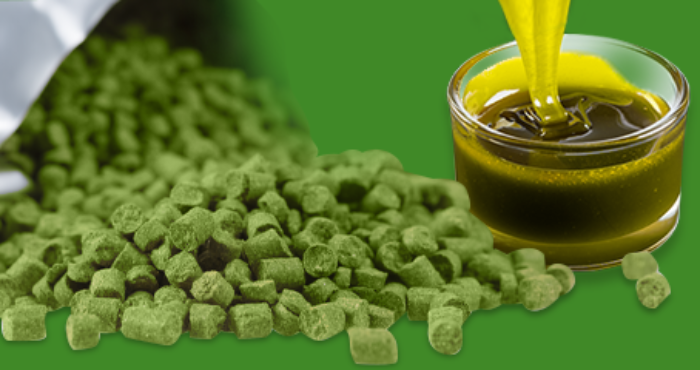Thinking beyond whole hops and hop pellets
There are advantages and disadvantages to using each form of hop, ranging from product handling and stability to inefficiencies and product loss.

Hops come in many forms: whole hops (also called whole leaf or whole cone hops), hop pellets, and hop extracts. When you’re talking form factor, there really is no right or wrong way to hop a beer. Although, if you sit down with just about any brewmaster, be prepared to choose a side—and brace yourself for a lively debate about the pros and cons of each.
When you get down to it, much of the debate is about philosophy and aesthetics. Craft brewers have a fondness for whole hops because they conform to a somewhat unspoken creed to use only the purest raw materials in their beer. That said, hop pellets are by far the most popular form of hops for brewing, both in the U.S. and around the world. Made from pure milled and compressed hope cones, hop pellets improve utilization and consistency. A third option is hop extract, which we’ll dive into in a bit.
There are advantages and disadvantages to using each form of hop, ranging from product handling and stability to inefficiencies and product loss. For many brewers, these pros and cons are part of the art of brewing—and the cost of doing business. But, as the market for craft beer changes, the cost of doing business can be a significant factor to consider.
So, what is it, exactly, that we use hops for? Mostly, it’s the resins found in the hop’s lupulin glands. These resins contain (a) the hop acids that give beer bitterness and provide microbiological stability, and (b) the essential oils and thiols that give beer its characteristic aroma—the floral, fruity, spicy, citrus, dank, and woody scents that make beer so varied and interesting. And yet, resins comprise only a small fraction of the total hop cone. All the other stuff, the vegetative material, is what makes hops difficult to deal with. Not only that, many of the undesirable aroma characters of hops—harsh, astringent, straw, and grassy—come from vegetation.
Once upon a time, hops were a minor component in most beers, back when lagers reigned supreme, so the hop vegetative material was not a big deal. Sure, it was inconvenient. Whole hops had to be removed, or the suspended solids derived from hop pellets had to be separated from the beer stream. But most international-style lagers and light beers are dosed at about one-tenth of a pound of hops per barrel of beer. With craft beer, the average hop dosing now exceeds 1.5 pounds per barrel, more than ten times that of typical light lagers. And hop solids are incredibly efficient at soaking up liquid, namely wort and beer. Suddenly, the process loss seen in craft becomes far from insignificant.
Which brings us back to the third class of hops, hop extracts. The production of this “alternative hop product” is based on the same processes that occurs during brewing: the extraction of hop acids and essential oils using carbon dioxide (CO2). Think of it as a turbo-charged way to juice a hop. At very high pressures, CO2 gas becomes a supercritical liquid that can “flow” through hop solids, and is extremely effective in extracting hop resins. The liquid CO2 selectively picks up the resins containing the hop acids and essential oils. When the pressure is lowered, the CO2 transforms back to a gas and it drops the resins behind. Voila! Fresh squeezed hops.
Barth-Haas has been using this process for over 30 years, and brewers worldwide have taken advantage of extract’s benefits. Although, it does have its limitations. As a resin, extract doesn’t mix well with cold beer, so it’s relegated to the kettle and whirlpool. Also, it’s not exactly easy to work with unless you have a process in place. The resin is a very thick, almost semi-solid material, and very sticky. If you’re dosing a portion of a container (generally a 1 or 2 kg can), it needs to be heated and measured. And if you spill it, it’s no fun.
Last year at the CBC, Haas introduced an improvement to traditional extract: a flowable bittering hop product that we call FLEX®. It’s primarily for beer bittering and is made using the same principles of CO2 extraction, along with a few other proprietary techniques to make it flowable at room temperature, so it’s incredibly easy to dose. Best of all, there’s no vegetative material to soak up wort. In fact, using FLEX as just a part of your hop bill to replace bittering pellets can significantly reduce wort loss.
As one of the world’s largest suppliers of hops, we’ll always love the beauty of whole cone hops. And for many years, we’ve embraced the efficiency of hops pellets. But we also realize that the demands of craft require innovative thinking to balance out the demands of business. We think advanced products like FLEX are the right kind of hops, at the right time for the industry. But, you know what—see for yourself. If you’re visiting the CBC this year, come by our booth and try a few beers brewed with FLEX especially for the event. We hope to see you there.
Cheers!
